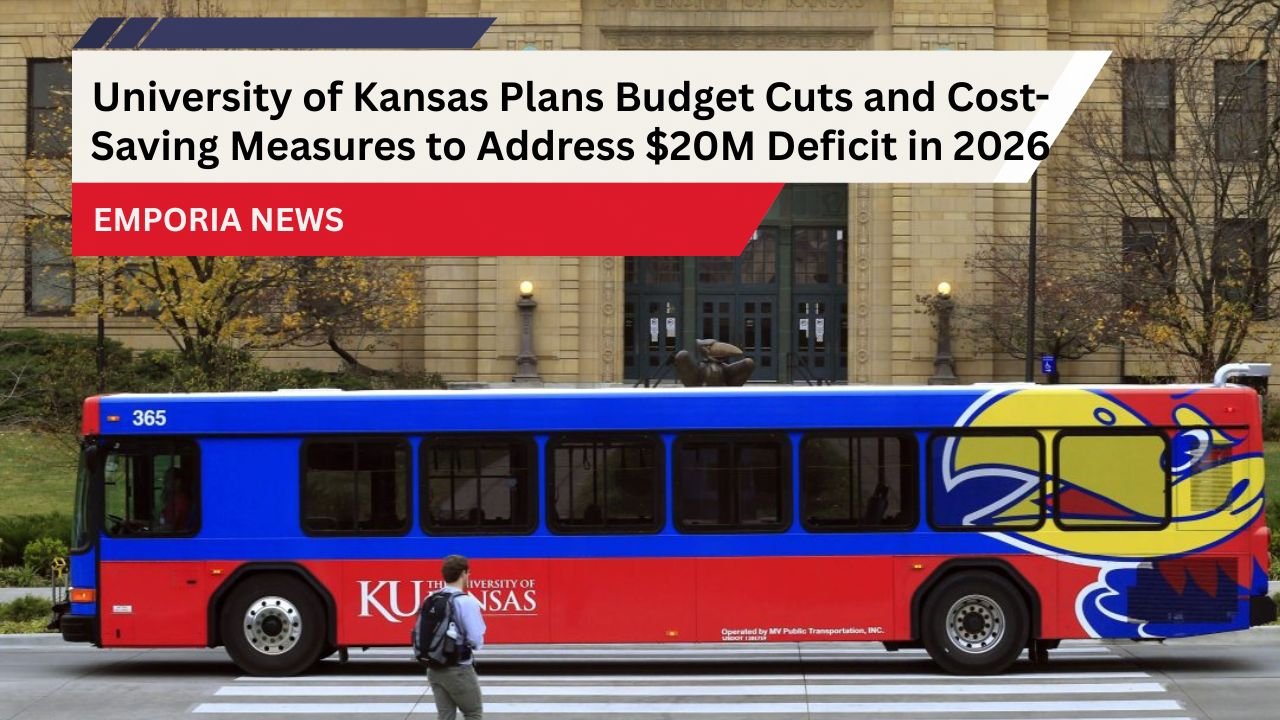As the University of Kansas (KU) wraps up its 2025 fiscal year, it will have nearly resolved a long-standing $50 million operating deficit.
However, the celebration is short-lived as university officials brace for a projected $22.3 million shortfall in the upcoming fiscal year starting July 1, 2025.
Chancellor Douglas Girod noted that while the university’s multiyear financial plan helped reduce the previous deficit to just $800,000, new financial challenges have quickly emerged.
Major Contributors to the Deficit: Athletics & Pay Adjustments
One significant hit to KU’s general fund is a $10 million reduction in reimbursements from Kansas Athletics Inc., due to a federal settlement that now allows student-athletes to receive direct compensation.
This impacts the athletic department’s ability to cover shared expenses such as tuition, housing, maintenance, and utilities.
Simultaneously, KU plans to allocate at least $17 million in new funding to adjust employee compensation for positions underpaid compared to similar roles in the private sector or at peer research institutions. It’s the first time KU has factored these “market pay adjustments” into its core financial plans.
Cost-Cutting Strategies Begin July 1
To manage the growing deficit, KU will enforce immediate budget reductions, starting with:
- A 20% cut in departmental travel expenses
- A 5% reduction in targeted department budgets
- Additional $10 million in savings expected by January 1, 2026
Looking ahead, KU aims to cut $20 million in future years through a combination of revenue growth and expense reductions.
Potential Layoffs and Workforce Reductions
Although layoffs are not the first option, KU officials acknowledge they may become necessary. Spokeswoman Erinn Barcomb-Peterson stated that the university will prioritize attrition and voluntary separation programs, but did not rule out the possibility of layoffs.
“Any workforce reductions will be carried out strategically to minimize impact on KU’s core mission,” she said.
KU will also explore:
- Centralized purchasing
- University partnerships for shared services
- Automation and program efficiency reviews
Revenue Generation: Jayhawk Global and New Conference Center
To offset costs, KU is expanding its Jayhawk Global online education program and preparing to launch a new convention/conference center at the renovated football stadium later this year. These initiatives are designed to create new revenue streams in response to declining federal support and unpredictable research funding.
Federal Policy Could Add More Uncertainty
The university’s financial outlook could worsen if proposed changes from the Trump administration limit how research universities use federal grant funds. KU has not yet factored in potential federal cuts but anticipates that the KU Center for Research might absorb up to $10 million in losses—though only temporarily.
“Federal unpredictability remains the biggest threat to KU’s financial stability,” said Barcomb-Peterson.
As it successfully closes a historic $50 million deficit, the University of Kansas now faces a new set of fiscal hurdles, including reduced revenue from athletics, rising employee compensation needs, and potential federal funding cuts.
By implementing strategic budget cuts, boosting online education, and exploring alternative revenue models, KU leaders are taking proactive steps to address a $22.3 million projected deficit for FY 2026—and even bigger challenges through 2029.
Chancellor Girod emphasized the need for higher education institutions to rethink funding models in a rapidly changing landscape.




